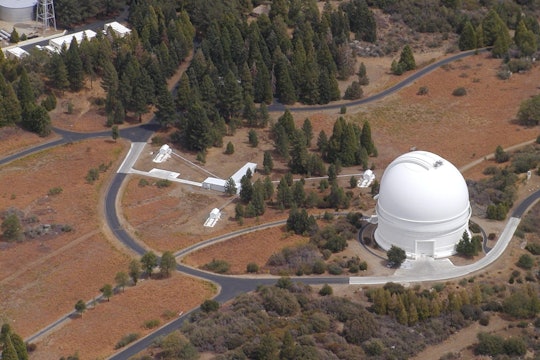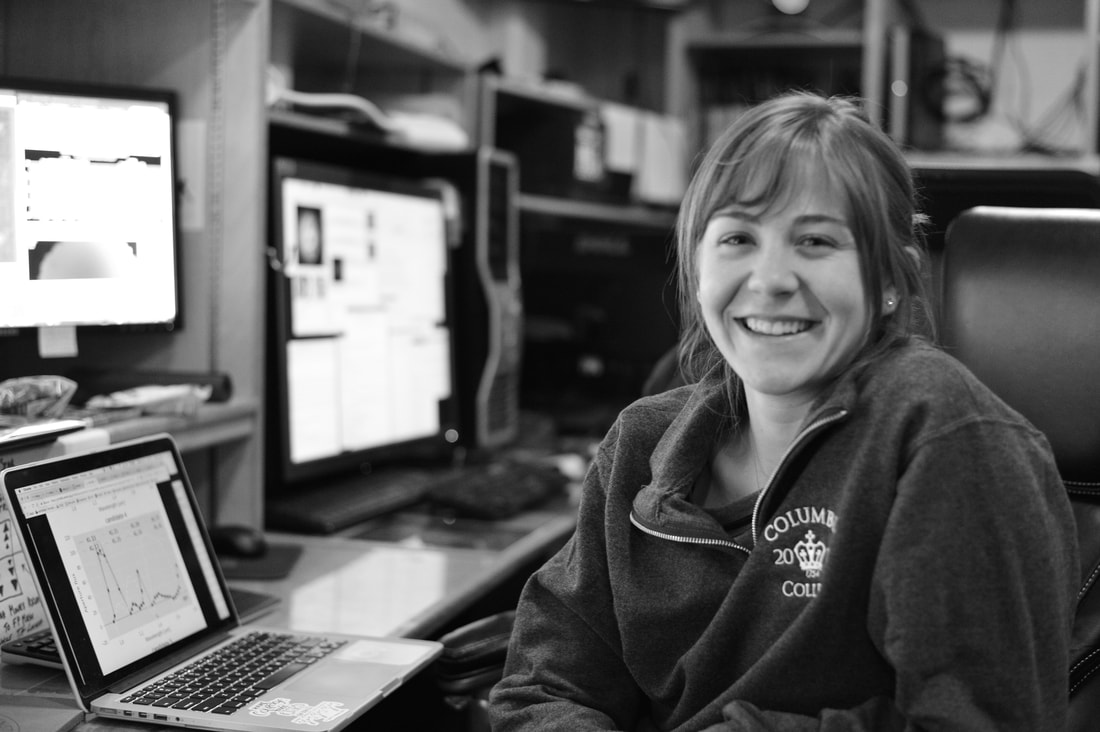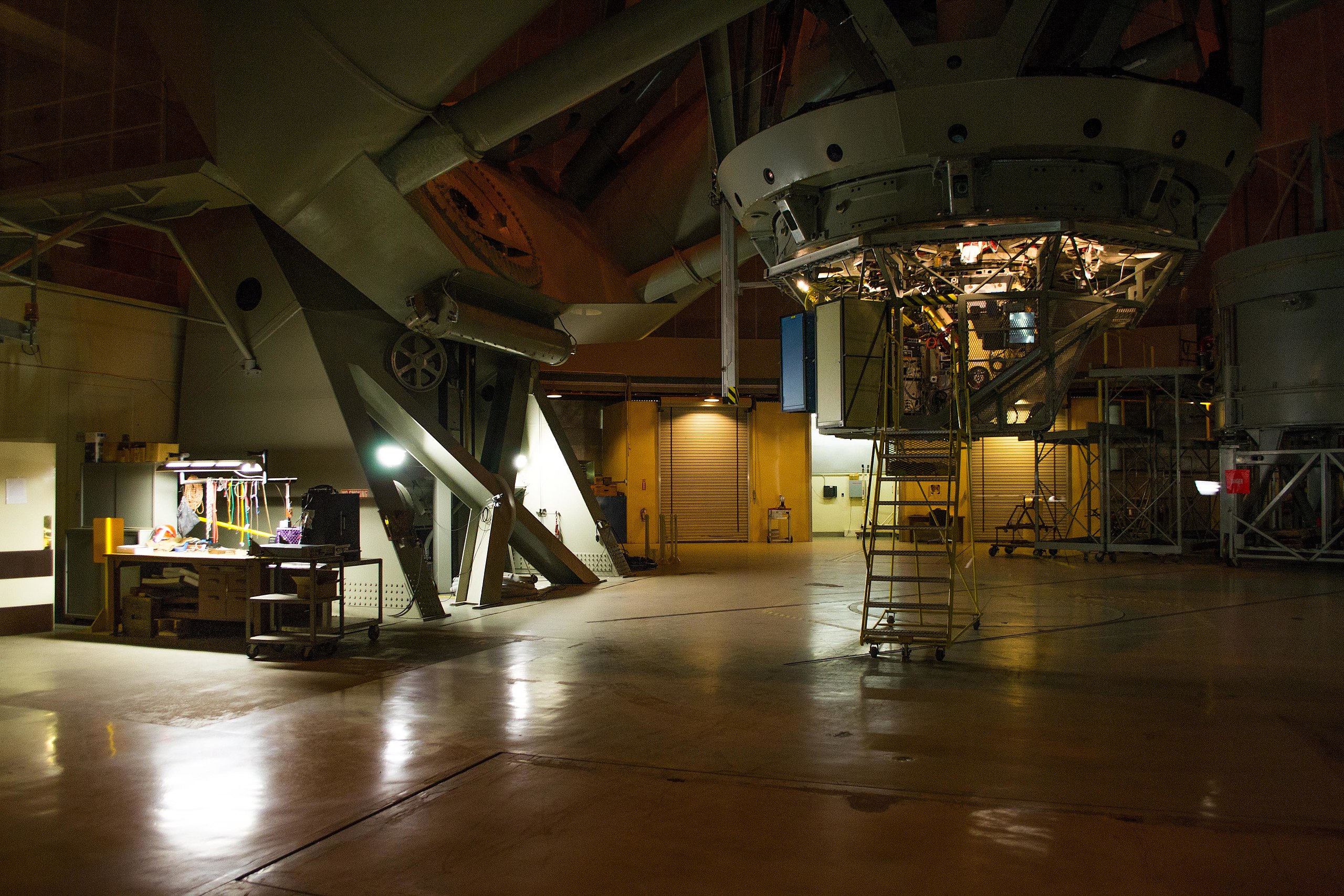
Gerard T. van Belle via Wikimedia Commons
The Last Stargazer takes an intimate view of the world through telescopes
Emily Levesque's portrait of "delightful isolation" is astronomer-approved
Sometimes I get a craving to be somewhere, anywhere new. A break from the routine, an escape from everything going on and all my tedious tasks, an opportunity to exist in a different world. After the last year, I suspect many have felt this desire. Emily Levesque has brought that much desired escape by telling the stories of astronomers and their adventures to capture the night sky in her recent book, The Last Stargazers.
I'm often asked what it’s like to be an astronomer, but it’s difficult to capture the essence of it. Our jobs vary wildly day to day, and person to person. Levesque's book captures the humanity of our field, and I would give this book to anyone who has wondered what it’s like as an astronomer. As she says, "I wrote this book to capture the human stories of working at telescopes."
A stereotype of astronomers is that we stay up all night as a daily part of our job, sitting with eyes glued to the eyepiece of a telescope. These mythical astronomers are like sailors, intimately, familiarly reading the night sky like a map. Unfortunately, astronomy in reality is generally more of a desk job — reading research papers, crunching numbers on a computer, writing down equations. Observing with a telescope is a special thing, where you have to propose for and be awarded time on the telescope. It's a highlight, an adventure, not a regular part of the job.
When I was in college, I was lucky enough to take an adventure to observe at Palomar Observatory near San Diego, CA. The drive up is treacherous, a windy mountain road that feels like the tram to another world, totally different from our own, someplace magical. Major observatories like Palomar are almost a whole town, filled with different telescope domes dotting the mountains along with support buildings, like the visitors center, a cabin where visiting astronomers stay, and the houses of the observatory’s permanent staff.

Observing with a modern telescope isn’t quite what people expect either — there isn’t an eyepiece to stare through all night. Although in the past people observed by eye and took detailed sketches (often having to get creative to stay warm through the night), we now have digital cameras hooked up to sophisticated instruments, feeding information to computers in a warm room where astronomers run the show.
There’s still something magical about seeing new images of a star come through to your computer in real time. And, plus, no longer have to sit out in the cold for an entire night. Even if we get to be warm, we do have to stay up all night for these special occasions—night schedules are hard to keep (I know I’ve fallen asleep at the computer more than once), but also hilarious and invigorating. I’ll always have fond memories of my first observing run at Palomar, filled with silliness and camaraderie from the gaggle of astronomers I worked those nights with. We had plenty of delicious snacks, our night lunches lovingly packed by the Palomar cooks, and even a few dogs that liked to hang out with us.
My advisor always made sure to visit the catwalk, a thin metal platform that encircles the telescope dome, to get some fresh air and see the night sky with her own eyes. The first time I accompanied her, it was unnerving moving through the dome to follow her to the door outside, feeling the metal behemoth of the telescope lurking above me. The moment we stepped through the portal to the catwalk, though, my nerves were gone; the worry was replaced by a deep awe at just how dark the sky was, with the Milky Way spilled across it, and at the fact that I was lucky enough to be here in this unique situation. “This is my job now,” I thought. After our long night of observing was over, we returned to the cabin (known as the Monastery), slept through the day, and woke up in the afternoon to start anew. Family-style dinners with all the astronomers on that mountain were the first thing that made me feel a part of the scientific community I'm still in today.

Briley Lewis observing as an undergraduate at Palomar Observatory
Rebecca Oppenheimer, AMNH
My story is only one small corner of what observing as an astronomer can be, and many more wild things have happened (like a telescope’s mirror being shot at in Texas). Levesque covers many more fun stories in The Last Stargazers, sourced from meticulous and numerous interviews with astronomers. Her book explores the wide array of ways to observe the night sky, from a “regular” optical telescope like the one I’ve been at, to radio telescopes, a telescope on a plane, or even telescopes taken along on adventures to chase transits.
Of course, observing isn’t all roses and existential awe — at Palomar, we had our fair share of nights with awful weather blocking out the stars, from a cloudy sky to falling ash from nearby fires. Levesque recounts other dramatic tales astronomer vs. nature in a chapter hilariously titled "Hours Lost: Six. Reason: Volcano," including her own experience of a major earthquake in Hawaii. She also shares entertaining legends from other astronomers showcasing the wide array of things that can go wrong—a telescope riddled with bullets, tarantulas climbing on unwitting observers, and more.
Even if there are some occupational hazards to observational astronomy, Levesque extols the benefits of traveling to a telescope, both personal and scientific. She says, "It may be an ordeal to get yourself to an observatory summit, but once you're there, there's a certain delightful isolation: you're there to observe and that's it." At Palomar, I felt this delightful isolation—being physically at a telescope allows you to be fully invested, immersed in the experience with your collaborators, and often have creative breakthroughs as a result.

Inside the Palomar Observatory in California
Vistor7 via Wikimedia Commons
Looking to the future, she describes how in-person observing is becoming more of a rarity—these wacky tales from astronomers are less of an occurrence as we increase our technological capabilities, creating new ways to observe remotely without even leaving your office. As I think we all know from the past year, though, there will always be something about being in person you just can’t replicate remotely. Like Emily concludes, these different modes of observing are just different tools in our scientific kitchen—just because you have a fancy food processor doesn’t mean you can throw out your simple, trusty knives. Even if the methods evolve, Levesque says, "the study of astronomy will still continue, feeding our curiosity and our humanity as we explore the universe".
I know I personally can’t wait for the next time I can go back to a telescope. I can vividly imagine the anticipatory drive up the mountain, the crisp air and the evergreen trees, the bright white telescope domes, and the smiling faces of my collaborators who are just as excited to be there as I am. Until then, The Last Stargazers brought back fond memories of adventures past for me, and I would wholeheartedly recommend it to anyone curious to take a glimpse into the exciting world of observational astronomy


I work at an observatory as an engineer, and I’m mostly only there during the day but every so often I get to stay up on the mountain for a night shift or two and it’s magical every time. I like how you emphasized the communal nature of observing, taking meals together and telling stories to keep each other up at night. Many astronomers also go on observing runs in foreign countries, enhancing the sense of adventure and enabling new cultural experiences. While robotic telescopes are great, something about staring at the night sky from a remote mountaintop with only one or two other people really just drives connection and wonder and curiosity.